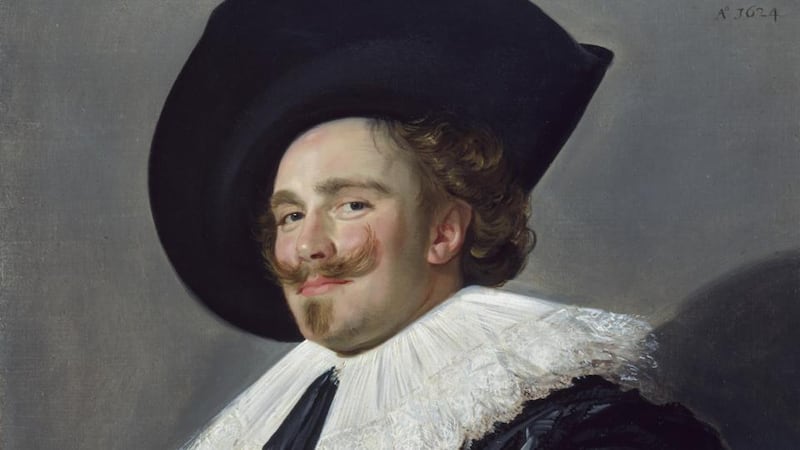The Wallace Collection is a hidden gem, situated north of Oxford Street on Manchester Square in London. This national museum is lavishly stocked with superb European paintings, sculptures, furniture, ceramics, objets d'art and arms and armour. Its central Great Gallery, described by the art historian Kenneth Clark as "the greatest picture gallery in Europe", recently reopened after a two-year refurbishment. It was a huge project, made possible by a £5 million grant from the Monument Trust. The design architect was John O'Connell.
It's amazing to walk into a room and find yourself surrounded by iconic paintings, works endlessly reproduced in art history books: Frans Hals's The Laughing Cavalier, Poussin's A Dance to the Music of Time, Velázquez's Lady with a Fan and his portrait of the infant Prince Baltasar Carlos in silver; Titian's Perseus and Andromeda, plus equally fine pieces by Rembrandt, Joshua Reynolds, Rubens, Ruisdael, Anthony van Dyck, Claude and more. Explore the rest of the building and you'll fine many more familiar images; the Venetian Room is worth a visit in itself.
O’Connell, well known for his work throughout Ireland, is lively, knowledgeable, deeply enthusiastic and mischievously irreverent. His association with the Wallace goes back 20 years. He was originally brought in by the previous director, Dame Rosalind Savill, for advice on the drawing room, and he has remained involved since. But not without attracting flak along the way, as he notes: “Some people complained, ‘Oh, the mystique is gone’, that sort of thing.” Such accusations seem a little unfair. The mystique appears reassuringly intact in the revamped Great Gallery and throughout the other 28 rooms. And, as O’Connell puts it: “I have lived for great galleries.”

The revamp of the Great Gallery is radical. It is not a historical reconstruction. “The original room is a rhomboid,” says O’Connell. That is, not a regular rectangle, but slightly askew. How to rectify that without taking it apart and rebuilding it? “We made a room within a room,” he says. He’s keen on new technology, and a whole battery of it is concealed behind the walls, freeing up the rest of the space.
One big gain is the lighting. A 1970s refurbishment had filled up the space above the ceiling with equipment. That has now been replaced and relocated. “We lifted the roof off and put in a big central lay light. With some other adjustments as well we’ve managed to allow in the magic that is natural light. Lots of natural light.”
Compared to today’s standard white cube spaces, the gallery is positively ornate, but one of the great things about the Wallace overall is that there’s a certain domestic quality to it – albeit on a grand scale – in its mixtures of paintings, furniture, objects and decoration. O’Connell hasn’t stinted on anything. “I love wainscoting,” he says. “And I love gilding – you can’t gild too much, I feel.” Above the panelling, the walls are lined with stunning red silk damask. “It’s woven in France by the world’s most attentive people. I’ve worked with them for 25 years now. They did the fabric for the green room in Castletown House. Here, they’ve woven three widths of silk together so it’s seamless.”
Lagan Valley link
Hertford House, which is home to the Wallace Collection, was once owned by the Seymour-Conways, who were originally from the Lagan Valley. The collection first opened its doors to the public in 1900. It was bequeathed by Julie Amélie Charlotte, the widow of Sir Richard Wallace, the man who gave the collection its name. He also built the Great Gallery.
Strange as it may seem, some uncertainty remains about Wallace’s relationship to the Fourth Marquess of Hertford, Richard Seymour-Conway, the previous owner of Hertford House. But the evidence tends to suggest that Wallace was Seymour-Conway’s illegitimate son, the result of a youthful romance with a woman called Agnes Jackson. Seymour-Conway’s mother, Maria Emilia Fagnani, took to the child and raised him as her own, which may account for some speculation that Seymour-Conway and Wallace were half-brothers.
Wallace had a keen eye for painting, furniture and objets d'art, although he was also financially reckless. Called on to bail him out, Seymour-Conway insisted that he sell the substantial collection he had acquired and employed him as his personal secretary. Now Wallace could apply himself to developing Seymour-Conway's collection also, which he did with unerringly good judgment.
They were based for the most part in Paris, not London. When Seymour-Conway died in 1870, he left what he could of his estate to Wallace rather than to his own nominal relations. That included his collection of paintings, armour, furniture, ceramics and more, and Hertford House. Wallace built the Great Gallery, which was completed in 1875, to accommodate the cream of the collection.
He was a trustee of the National Gallery in London and a governor of the National Gallery of Ireland, and gave pictures to both. He died in 1890. His and Charlotte’s son had died a few years previously. When she left the collection to the state, it was as a closed collection: that is, nothing could be taken from it or added to it, even temporarily. That has created difficulties in a world where artworks are customarily circulated for temporary exhibitions, but it has also preserved the character of the collection overall. She also stipulated that the public should have free access. If you happen to be in central London, take advantage of her generosity.












